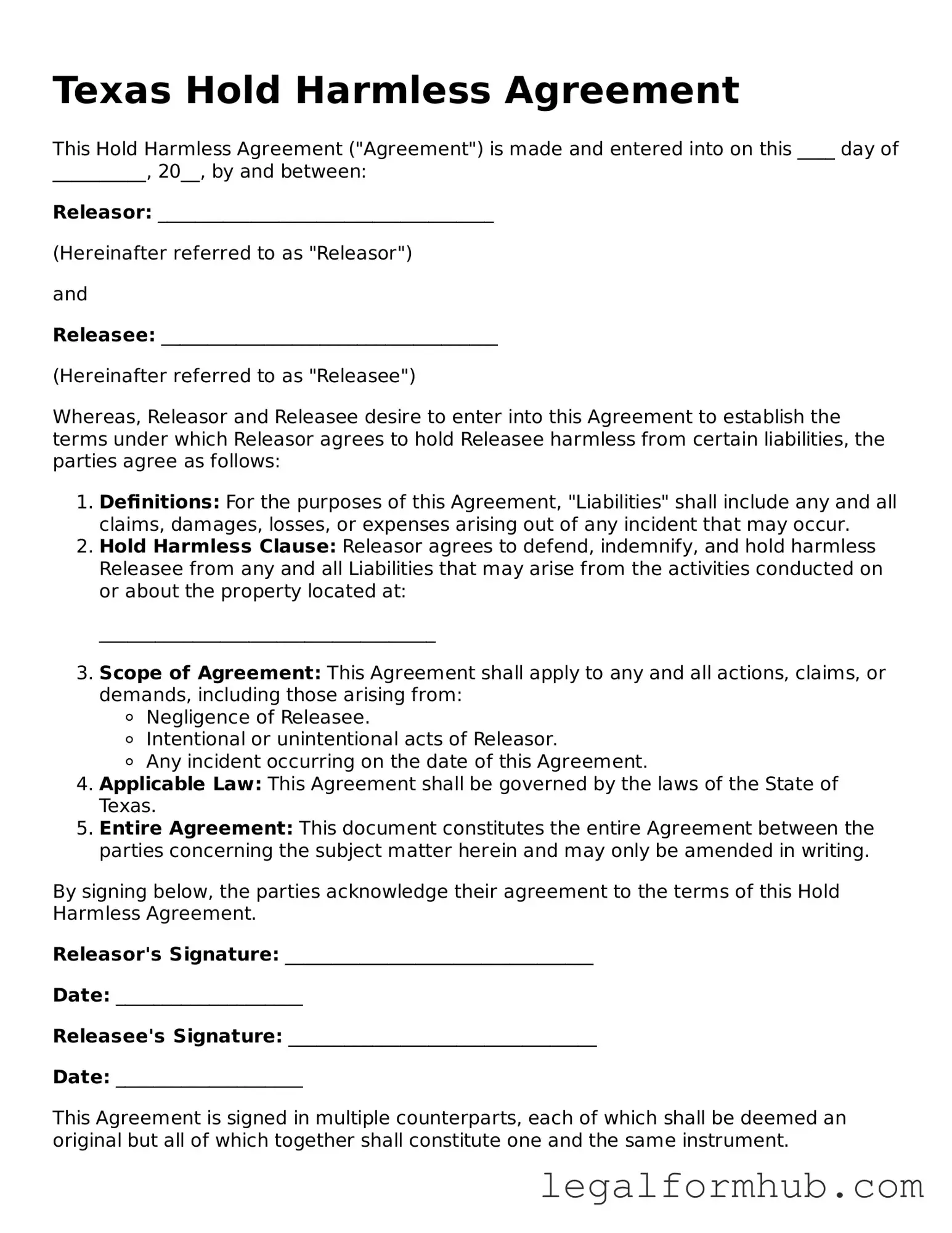A Waiver of Liability is a document that releases one party from legal responsibility for any injuries or damages that may occur during a specific activity. Similar to the Hold Harmless Agreement, this waiver is often used in recreational activities, sports events, or other situations where risks are present. Participants sign this document to acknowledge that they understand the risks involved and agree not to hold the organizer responsible for any accidents that may happen.
An Indemnity Agreement is another document that shares similarities with the Hold Harmless Agreement. This type of agreement involves one party agreeing to compensate another for certain damages or losses. While a Hold Harmless Agreement focuses on protecting one party from liability, an Indemnity Agreement emphasizes financial responsibility for any claims that arise. Both documents aim to clarify responsibilities and protect against unforeseen events.
A Release of Claims form is often used in conjunction with Hold Harmless Agreements. This document allows individuals to relinquish their right to pursue legal action against another party for specific claims. By signing a Release of Claims, individuals acknowledge that they will not seek compensation for any injuries or damages that may occur. This document serves to protect the party being released from future legal issues.
A Consent to Treat form is commonly used in medical settings. While it may not seem directly related, it shares the principle of informed consent found in Hold Harmless Agreements. Patients sign this form to grant healthcare providers permission to administer treatment, acknowledging the risks involved. Both documents emphasize the importance of understanding potential dangers and accepting responsibility for personal choices.
An Assumption of Risk form is similar to the Hold Harmless Agreement in that it requires individuals to acknowledge the inherent risks associated with an activity. By signing this document, participants agree to take on those risks and not hold the organizer liable for any resulting injuries. This form is often used in adventure sports or activities where the likelihood of injury is higher.
Understanding the importance of various legal agreements, such as the Employment Verification form, is crucial for both employers and employees. This form helps verify work history and eligibility for employment, ensuring compliance and operational efficiency. For those looking to create key documents, you can Fill PDF Forms to facilitate the process.
A Liability Insurance Waiver is a document that limits the liability of an insurance provider in specific situations. Similar to the Hold Harmless Agreement, it protects one party from being held accountable for certain claims. This waiver clarifies the extent of coverage and outlines the responsibilities of both the insured and the insurer. Both documents work to mitigate risk and outline expectations regarding liability.
A Non-Disclosure Agreement (NDA) may not directly relate to liability, but it shares a common theme of protecting interests. An NDA prevents parties from disclosing confidential information to third parties. While the Hold Harmless Agreement focuses on liability, both documents aim to establish boundaries and protect the parties involved from potential harm—whether that harm is physical or reputational.
A Service Agreement often includes clauses that mirror the protective elements found in Hold Harmless Agreements. This document outlines the terms of service between two parties and may include provisions that limit liability for one or both parties. By defining responsibilities and expectations, Service Agreements help to prevent misunderstandings and legal disputes, similar to the goals of a Hold Harmless Agreement.
